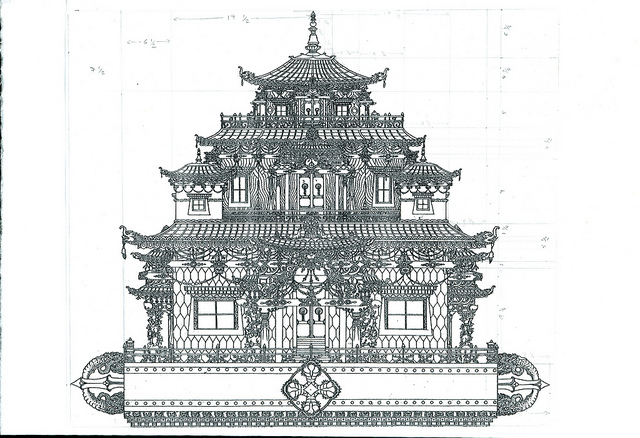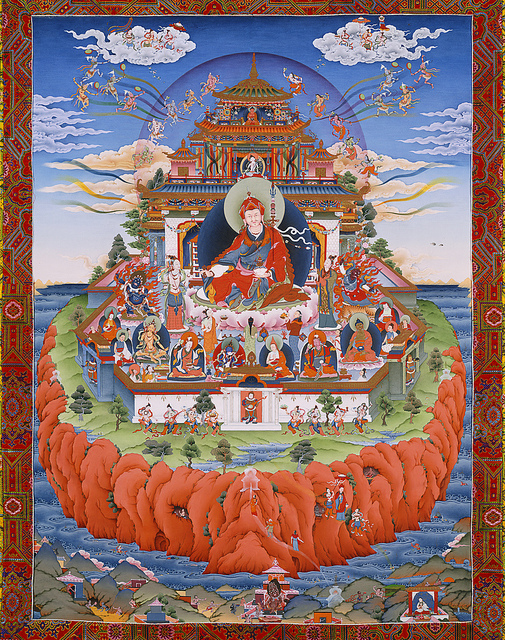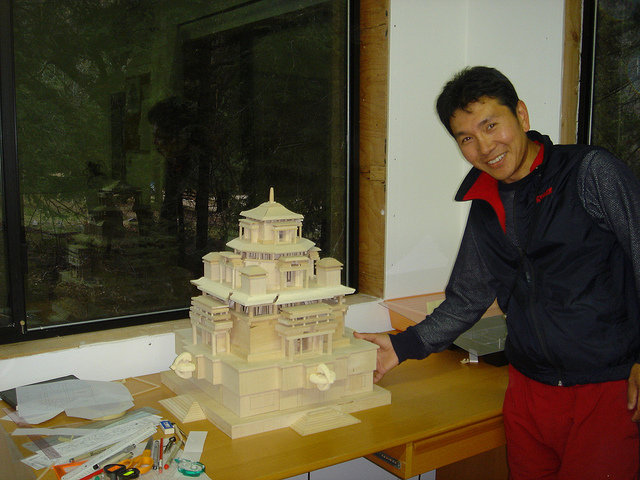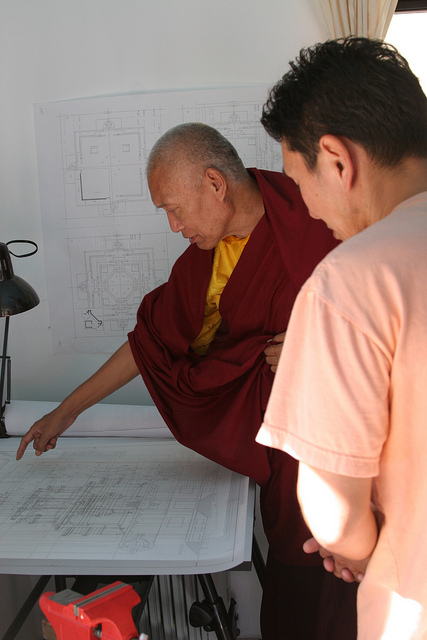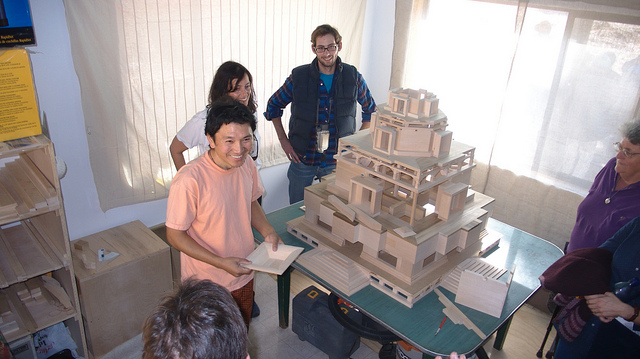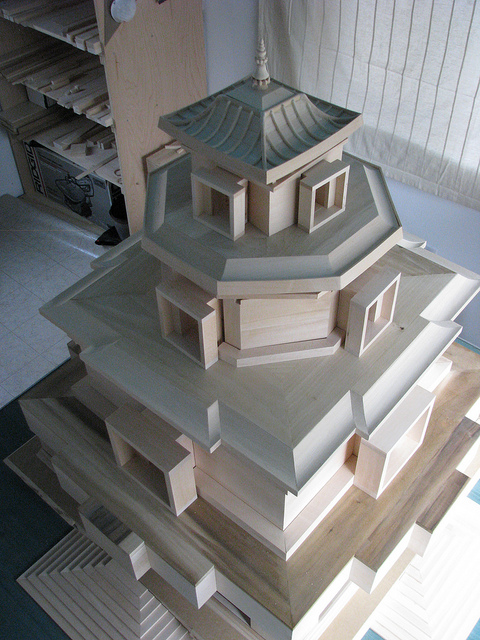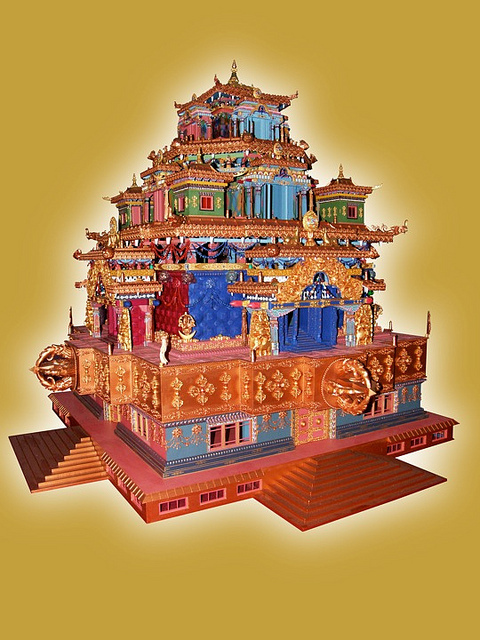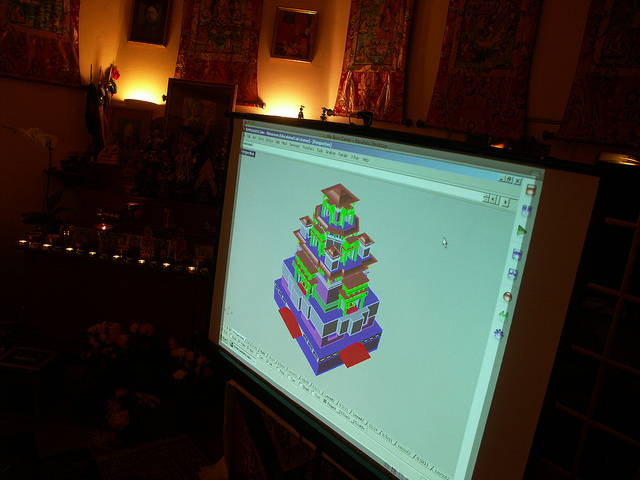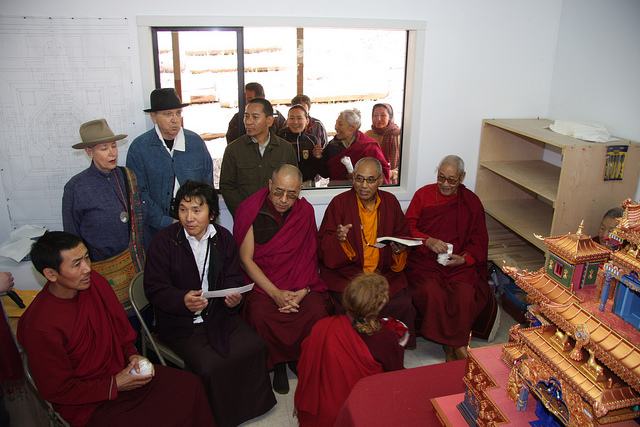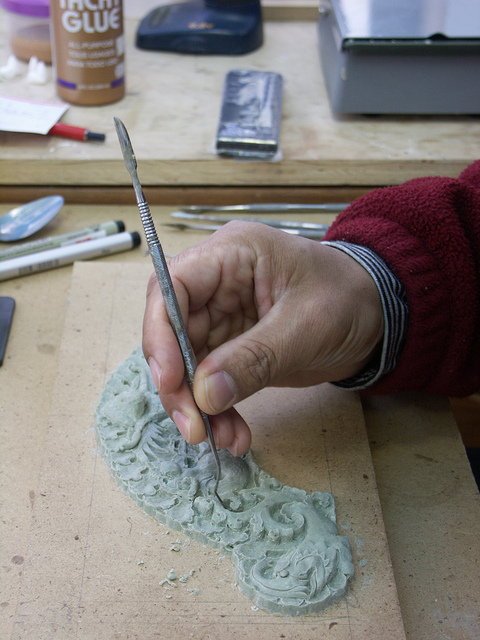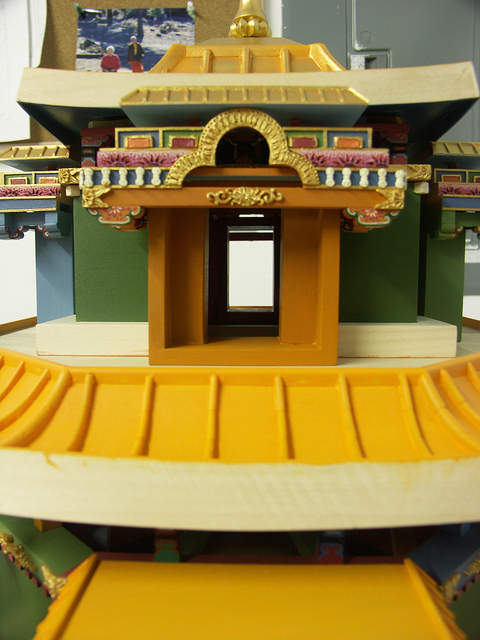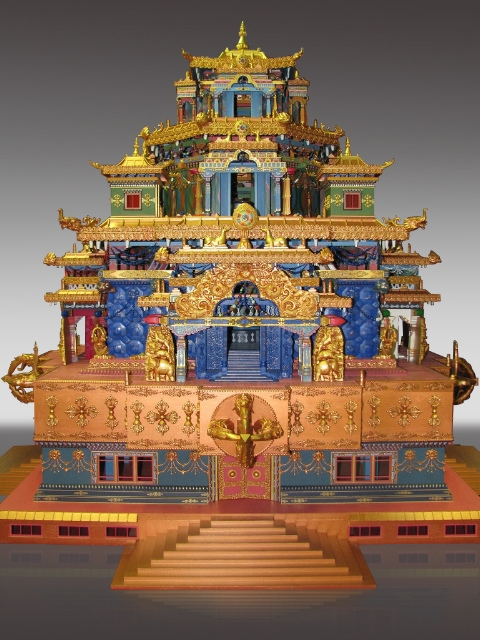“Mandala is the intricate, art aspect of Tibetan culture, based on specific lineages of teachings passed from master to student over generations. If a lineage is lost or broken, then the art form would be nothing more than an ordinary person’s creation, without much essence. That is why building Zangdok Palri is central to the realization of our mission. The very process of building a Mandala is itself an act of teaching, or passing down, tools for peace and lasting happiness. Building Mandala teaches the qualities of patience, diligence etc. It is also an opportunity for learning about the ancient art form itself, its symbolism and meaning.” The esoteric aspect of our mission is the belief that when such a Mandala is realized with the lineage intact, and then it is consecrated by the actual lineage holders—the very sources of wisdom and compassion—the entire monument becomes alive with blessings, which radiate outward for the benefit not only of the immediate area, but the entire world. The entire universe will benefit, first in balancing the elements. As we can see, the elements are completely disturbed by the terrible state of mind of humanity. More than ever before, nature’s expression of displeasure is causing inconceivable damage to life—human beings, wildlife and so forth. It is believed that building such a Mandala will contribute toward taming, balancing & settling mother nature’s elements. The second most important aspect is that the blessings of such a Mandala will instill peace of mind. Human beings come to very limited conclusions when they lose their hope. Our capacity for reasoning beyond lost hope is limited, and we make decisions that will bring more suffering, damage and destruction. Monuments like Zangdok Palri are a source of hope to those who have a spiritual affinity. It is the same case with all of the world’s monuments. When we have a source of hope, a world of possibility opens up, and we are willing to explore.”
—Lama Chödak Gyatso Nubpa
Zangdok Palri, the Glorious Copper Colored Mountain, is a highly symbolic and intricately detailed Mandala representing the enlightened qualities of Guru Padmasambhava, the master who brought Buddhism to Tibet in the ninth century. For those who see, touch, enter or remember this sacred structure, it is said that a connection is made to strengthen one’s spiritual development and to realize one’s innate compassion. The initial stages for constructing this Mandala as a centuries-lasting, four-story monument dedicated to global peace and harmony, began under the direction of Lama Chödak Gyatso Nubpa Rinpoche.
Historically this Mandala is extremely ornate and detailed, requiring rare esoteric expertise that is currently in danger of being lost. During the Chinese communist takeover of Tibet in the twentieth century, almost every representation of the Zangdok Palri Mandala in Tibet was lost as part of the destruction of six thousand monasteries and the subsequent loss of most of Tibet’s sacred art.
In May of 2009, Ari Bhöd’s elaborate three-dimensional Zangdok Palri Mandala and detailed architectural model was completed and consecrated in a traditional ceremony at Pema Drawa, Tehachapi, California, where the Zangdok Palri Mandala was constructed and lives today. This ceremony was presided over by Lama Gyatso. Joining Lama Gyatso and Ari Bhöd Lamas for the historic and important ceremony were Zangdok Palri consultant Lama Gompo Tenzin Rinpoche—the humble yet revered lineage-holder of mandala, complex religious symbology and ritual arts—as well as Lama Gompo’s heart-student and nephew, master mandala artist and Zangdok Palri creator, Pema Namdol Thaye. Also in attendance was our project’s renowned western architect, Michael Rotondi, FAIA. Since then, the Zangdok Palri has been blessed and consecrated by His Holiness Dodrupchen Rinpoche, His Holiness Taklung Tsetrul Rinpoche, His Holiness the Sakya Trichen, His Eminence Namkha Drimed Rinpoche and a host of distinguished Lamas, during their visits to Ari Bhöd, Pema Drawa.
Ari Bhöd’s solitary retreat land, Pema Drawa, was acquired with an aspiration to serve as the location to construct Zangdok Palri USA in the form of a four-story monument. This enlightened endeavor was one of Lama Gyatso’s most sincere and ambitious aspirations in his pursuits to accomplish “that which can bring peace to humanity.”
In October 2009 Lama Gyatso passed in to parinirvana. However, his commitment to building and preserving this particularly sacred and nuanced architectural treasure of Tibetan cultural heritage, for its artistic lineage, esoteric benefits and most importantly its enlightened qualities did not leave with him. Zangdok Palri lives on here at Pema Drawa in our three-dimensional Mandala and the related practices, benefiting the Ari Bhöd community and everyone seeking their own ultimate potential; the awakened state of one’s own mind.
At this time Ari Bhöd will not be pursuing the construction of the Zangdok Palri USA monument at Pema Drawa. We will however, continue to fulfill this aspiration by preserving and propagating the Zangdok Palri teachings and whenever possible focus our efforts on helping to support the construction of the traditional Zangdok Palri Temple & meditation center currently being constructed in Pharping, Nepal by Ari Bhöd’s visiting Lama and spiritual guide, the Venerable Gelong Kalsang Rinpoche.
THE BENEFITS OF BUILDING SUCH A STRUCTURE



